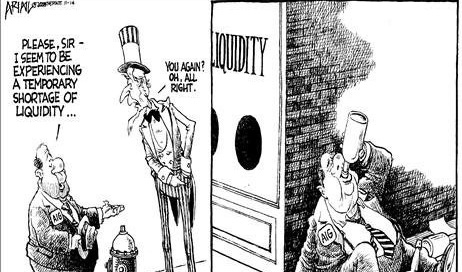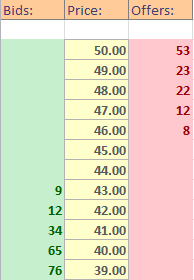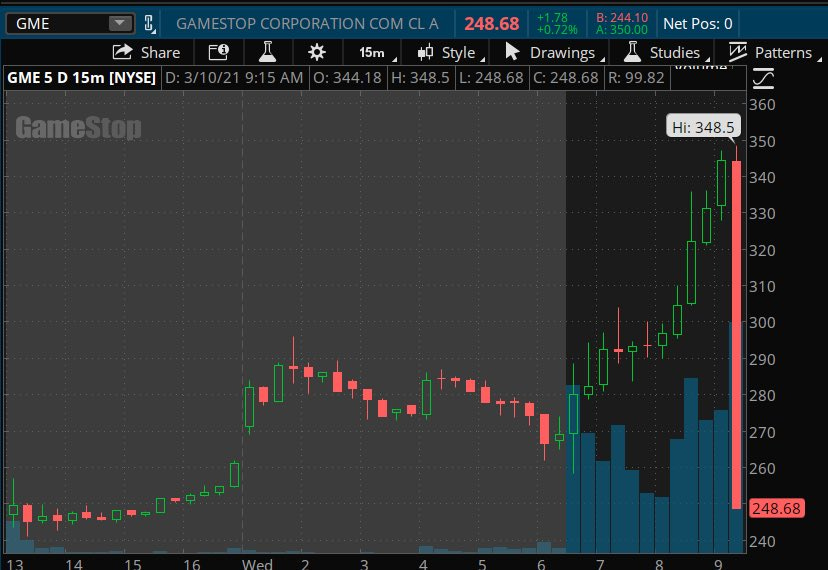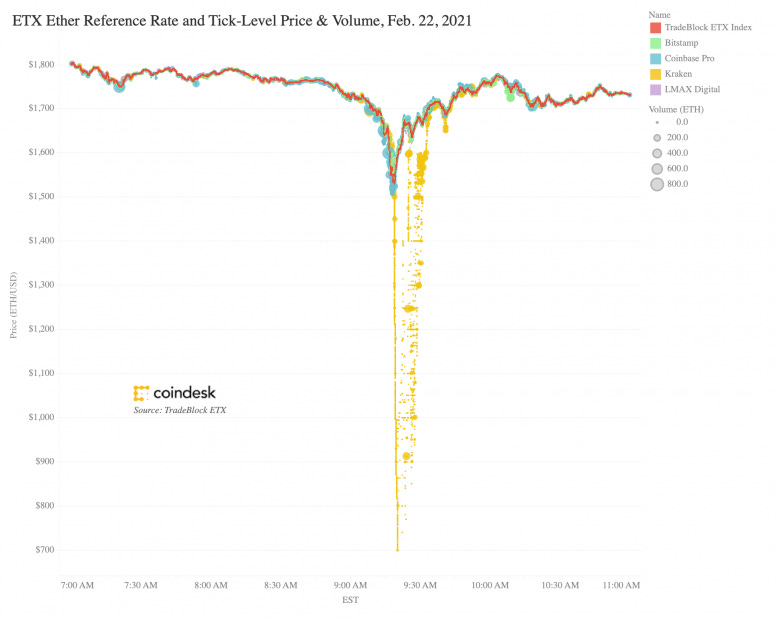Simple Liquidity 101
As any good libertarian knows, “Any rate the market offers is, by definition, fair.” However, the “simple Econ 101” explanation of price as the equilibrium of supply and demand has a problem in reality: it assumes infinite liquidity. The price of an asset is defined by where the bid meets the ask, but I cannot simply buy as much of the asset as I want at this price unless there are enough sellers willing to provide me the supply. Liquidity, as a result, is both a measure of how true the price that the discovery mechanism has given us is, and the ease with which you can increase or decrease exposure to the asset.
With stocks, this gives us two working measures of liquidity:
Type 1 liquidity: a high amount of shares are traded per day, measured relative to the float (the number of outstanding shares a company has). This implies that, for the most part, if I really need to sell or buy shares, they are acquirable. This does not, however, imply anything about the price I can acquire things at.
Type 2 liquidity:
How much size the order book can absorb with minimal market impact. Pretend the order book above is for the stock LQDTY. The numbers at each price level on the bid side represent how many collective lots (blocks of 100 shares) people are willing to buy at that level, and naturally, the numbers at each price level on the offer side represent how many lots people are willing to sell at that level. Ignoring the fact that one would never do this and a spread between 43 x 46 on equity is insanely wide, let’s imagine I just want to sell 100 shares at market. I would clear at 43, and the order book would not move - though every order fill is liquidity taking, there is sufficient liquidity such that I can fill my entire order at that price level. However, if I sell 40000 shares at market - 400 lots - I will eat through the 9, the 12, the 34, the 65, and the 76 and have 204 lots left to sell.
Thus there are two kinds of liquidity, and one can definitely exist without the other. AAPL and SPY - the most liquid shares traded - naturally have both in abundance.
Trivia: which type of liquidity do we think GME lacks?
This is a natural occurrence when you have a lot of people who want to trade a stock but don’t have a particular price in mind that they want to do it at, and the order book is really thin. This happens all the time in crypto “flash crashes”, for example.
Prices are, by definition, liquidity seeking. When that liquidity doesn’t show itself explicitly (in GME, I highly doubt there is a bunch of iceberg orders - people buy and sell over-reacting to ticks and gaps), you are going to get a lot of gaps and halts as the stock tries to find a stable market made between buyers and sellers. In crypto, there is no “halt” mechanism - as such, the price gets destroyed as a large order eats through the entire market until people bid it back up and provide liquidity, as you saw immediately after the GME unhalt (as the corollary to every order fill taking liquidity is that every order placed provides it). You can tell how “honest” the market depth is based off of the bid-ask spread, the depth of orders that look non-algo supplied (because when a price gaps, it’s not the market makers who are getting hit on the way down - they are the ones pulling the liquidity and trying to match depth on each side), and how quickly the book adjusts to the next price. If you watch GME flow, you will notice that small retail lot orders get filled between the bid and the ask, but larger blocks get filled well outside the best bid/best ask.
If you demand liquidity provision, you have to pay for it - the 89000 block is not going to get filled at the same price as the 9500 block, even though they were filled at the same time.
As to why this happened on GME, I can only speculate. As crypto does not have directly hedgeable options - how exactly do you “short” a bitcoin to delta hedge an option you sold? (Yes, I know about perpetual swap mechanisms/forced liquidations, but that’s a discussion for another time) - the options are by nature “synthetics”, as they do not exert direct sell pressure on the underlying itself. Thus, crypto “flash crashes” are likely due to large whales seeking immediacy rather than minimal slippage while selling by liquidating large blocks of a position into a market full of type 1 liquidity (as crypto’s non-price specific demand is insane) but lacking type 2. Stocks do not operate this way, as we noted in the original “gamma squeeze” GME phenomenon. As such, if I have a large GME position, I can try and slowly leg out of it to minimally impact the price, or I can buy puts to guarantee my right to sell the shares at the strike price. However, GME implied volatility is insane, and you will naturally pay a huge premium to buy any options, let alone options anywhere near the current price. Thus, you can artificially pump up the vol if you load up on puts and then liquidate your massive order into the market. Naturally, the stock will be bid up immediately after you drive the price down, and you will suffer extreme slippage on your stock liquidation, but if your put positions are large enough, the amped-up IV on your puts (along with some increased skew towards downward gaps) should manufacture a very positive trade (given that you are probably liquidating a share position that has surged up). If you have the tape up to an hour prior to the GME crash, I am positive you will see accumulation of puts between the 200 and 300 strikes.
You might think this is market manipulation, and it is, in a very public way - but normally there is no benefit to crossing a spread, as you are making your own trade more expensive. Manipulation through identifying liquidity crunch opportunities is just seeking alpha, it’s not inherently wrong nor is it illegal. HFTs and MMs aren’t the only ones who can utilize an order book! Microstructure knowledge asymmetry has edge too! Of course, this trade could be as equally attributable to obliviousness, rather than nefariousness. That’s the downside to conspiratorial thinking - until the curtain goes up and all the information is revealed, you can never be certain what’s going on.
On that note…
From the Malt Vault - Is Tech Investing a cheap-cash social construct?
(in honor of SoftBank losing money yet again)










